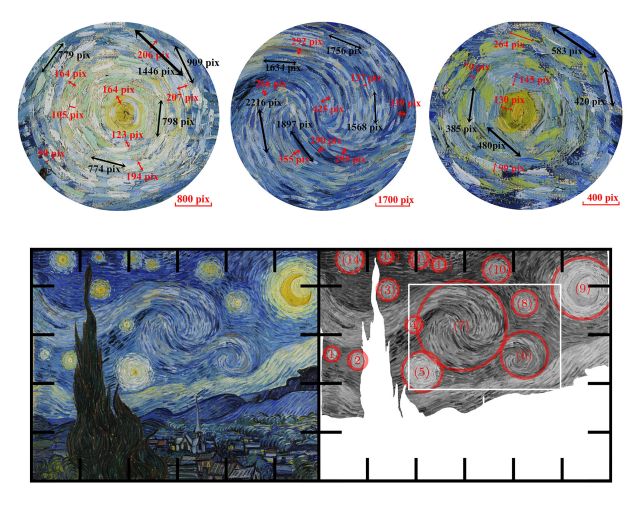Created by Dutch painter Vincent van Gogh in 1889, The Starry Evening is among the most intriguing works the artwork world has produced. Not solely is it breathtakingly evocative, the roiling, swirling sky appears to recommend an in depth understanding of the physics of turbulence.
Now, a brand new, in-depth evaluation confirms it. The brushstrokes within the van Gogh masterwork are per the fluid dynamics of Earth’s ambiance – and, presumably, the broader Universe.
“[The painting] reveals a deep and intuitive understanding of pure phenomena,” says physicist Yongxiang Huang of Xiamen College in China.
“Van Gogh’s exact illustration of turbulence may be from learning the motion of clouds and the ambiance or an innate sense of easy methods to seize the dynamism of the sky.”
We principally cannot see it with our eyes, however Earth’s ambiance is an ever-moving, ever-changing, roiling mass of fluid. Clouds would possibly reveal this fixed exercise, however an intimate understanding of atmospheric turbulence often requires devices that fastidiously map its in any other case invisible actions.
We won’t, in fact, measure the atmospheric turbulence that van Gogh depicts in The Starry Evening. However what a crew of scientists led by physicist Yinxiang Ma of Xiamen College might do was measure the brushstrokes to see in the event that they matched with earlier research, which decided that the turbulence exhibited within the portray is per the idea revealed by Soviet mathematician Andrey Kolmogorov within the Forties.
“In distinction to earlier research that examined solely a part of this portray, all and solely the whirls/eddies within the portray are taken into consideration on this work, following Richardson-Kolmogorov’s cascade image of turbulence,” the researchers write of their paper.
“[Our] outcome means that van Gogh had a really cautious commentary of actual flows, in order that not solely the sizes of whirls/eddies in The Starry Evening but additionally their relative distances and depth observe the bodily legislation that governs turbulent flows.”
The researchers used a high-resolution digital image of the paintings to look at the brushstrokes in 14 whorls and eddies within the sky depicted within the portray as a tracer for atmospheric turbulence, much like the motion of leaves in an autumn eddy.

For every of those brushstrokes, they fastidiously examined the spatial properties, in addition to the luminance of the paint, evaluating it to Kolmorogov’s turbulence principle, which describes how vitality flows continually from bigger eddies to smaller ones earlier than dissipating.
They discovered that the eddies within the portray glad the necessities of Kolmogorov’slaw of turbulence scaling, which is what earlier researchers have additionally discovered.
However analyzing the smallest scales of the brushstrokes, the crew discovered that the portray was additionally per the facility spectrum of scalars as outlined by Australian mathematician George Batchelor in 1959. He discovered that scalars, or scaled elements in turbulence – that’s, eddies of various sizes – ought to show an influence spectrum comparable to their measurement.
A earlier examine additionally discovered that the turbulence revealed in The Starry Evening is also seen within the molecular clouds out in area, the place the very stars are born. The brand new examine confirms that the artist’s intuitive understanding of the physics of nature could have been even deeper than we realized.
“Vincent van Gogh, as one of the vital notable post-impressionist painters, had a really cautious commentary of turbulent flows: he was in a position to reproduce not solely the scale of whirls/eddies, but additionally their relative distance and depth in his portray,” the researchers write.
Future experimental analysis in portray turbulent flows might assist us perceive how the artist managed to seize turbulence, not simply within the depiction of the sky, however within the bodily act of portray itself.
The analysis has been revealed in Physics of Fluids.





